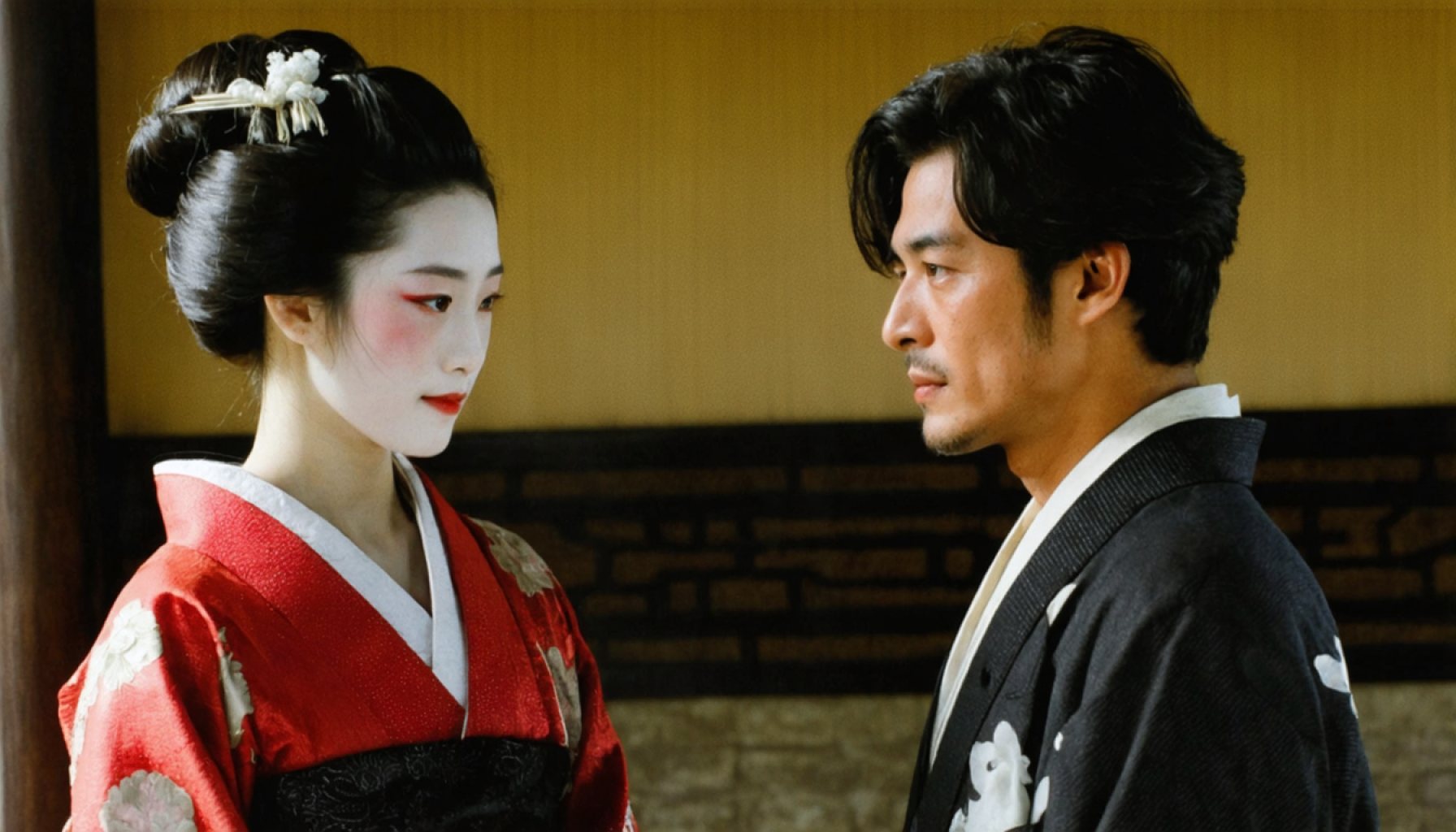- “Yukite Kaheranu,” set in the Taisho and early Showa periods, explores love and youth through an artistic lens.
- Directed by Kichitaro Negishi, the film brings to life a script written by Youzou Tanaka over forty years ago.
- Key characters include Taeko, a budding actress, Chuya, a student, and Hideo, a critic, creating a dynamic love triangle.
- The storyline unfolds against the backdrop of culturally rich locales like Kyoto and Tokyo, capturing the essence of early 20th-century Japan.
- The film examines themes of ambition, desire, and the complexities of human relationships.
- Through its narrative, it poses timeless questions about the pursuit of love and legacy.
Amidst the cultural tapestry of the Taisho and early Showa periods in Japan, a new film has taken center stage, delivering a compelling tale of love and youth. The much-anticipated “Yukite Kaheranu,” now showing nationwide, invites viewers into the vibrant world of three passionate individuals whose lives intertwine in a symphony of longing and artistry.
The film, emerging from a long-cherished yet elusive script penned over four decades ago by the esteemed Youzou Tanaka, finally breathes life under the direction of Kichitaro Negishi. Each frame bursts with a luminous beauty, capturing seasonal shifts as the backdrop for heart-wrenching encounters.
Autumn in Kyoto unfolds with an unlikely meeting between a budding actress, Taeko, played by Suzu Hirose, and the student, Chuya, portrayed by Daisei Kido. Their relationship, precarious and tender, evolves amid the city’s historic charm. Their journey leads them to Tokyo, where a new character, the insightful critic Hideo, enters their world. The resulting relationship reshapes their destinies—filled with tension, unspoken admiration, and a shared thirst for profundity.
In spring’s bloom and summer’s heat, their relationships teeter on a delicate balance between love and ambition, culminating in a poignant love triangle. Passion flares and conflicts ignite as the trio navigates the complexities of desire and intimacy that threaten to unravel them.
More than an aesthetic masterpiece, “Yukite Kaheranu” is a vivid portrayal of early 20th-century Japan, intertwining tales of ambition and affection. It asks a question as old as time: how far might we wander in pursuit of love and legacy?
Unveiling the Magic: The Secret Behind “Yukite Kaheranu” and Its Timeless Appeal
How-To Steps & Life Hacks
1. Study Cultural Context: To fully appreciate “Yukite Kaheranu,” consider reading about the Taisho and early Showa periods in Japan. This will enhance your understanding of the setting and character motivations within the film.
2. Watch with Subtitles: If you’re not fluent in Japanese, follow along with subtitles to grasp the nuanced dialogue and cultural references.
3. Explore Related Art Forms: Engage with other Japanese media from the era to deepen appreciation. This could include literature, painting, or music that influenced the film’s production design and storytelling.
Real-World Use Cases
– Film Studies: “Yukite Kaheranu” serves as an excellent example in film studies for exploring themes of love, ambition, and the complex interplay of human relationships against a historical backdrop.
– Cultural Events: The film can be featured in cultural festivals to showcase Japanese history and filmmaking techniques.
Market Forecasts & Industry Trends
The Japanese film industry continues to blend historical narratives with modern storytelling. The success of films like “Yukite Kaheranu” indicates a growing interest in period films that capture the essence of earlier eras, potentially increasing production and international distribution.
Reviews & Comparisons
Critics have praised “Yukite Kaheranu” for its rich cinematography and authentic portrayal of early 20th-century Japan. Compared to other films from the era, it stands out for its narrative depth and historical accuracy. Films such as “Rurouni Kenshin” and “Rikyu” share similar stylistic choices and themes but diverge in narrative focus and time periods.
Controversies & Limitations
While the film has been widely admired, some viewers find the pacing slower compared to mainstream cinema, possibly detracting from its storytelling for those unfamiliar with Japanese cultural nuances.
Features, Specs & Pricing
– Director: Kichitaro Negishi
– Main Cast: Suzu Hirose, Daisei Kido, and additional roles by Hideo
– Runtime: Approximately 150 minutes
– Language: Japanese
– Generally available in select theaters and streaming platforms for purchase or rent at prices ranging from $5 to $20, depending on the region and format.
Security & Sustainability
Streaming platforms ensure encrypted data confidentiality, maintaining the viewing security of users globally. The film industry increasingly considers sustainable practices in production, including reduced carbon footprint measures during filming.
Insights & Predictions
The film’s success could encourage more studios to invest in historical films with strong storytelling, potentially leading to increased interest in Japanese cinema on the global stage.
Tutorials & Compatibility
View the film on various platforms, including online streaming services that support formats like HD and 4K. Check device compatibility to ensure optimal viewing experience.
Pros & Cons Overview
Pros:
– Rich historical setting
– Engaging character development
– Beautiful cinematography
Cons:
– Slow pacing may deter some audiences
– Limited international availability
Actionable Recommendations
– Deepen Understanding: Engage with documentaries or articles about the Taisho and Showa period for a richer understanding.
– Film Screenings: If you’re an educator or film club leader, organize screenings and discussions to explore its cultural and historical themes.
– Explore More: Look for related films in the genre to broaden your understanding of Japanese cinema.
For more on Japanese cinema, visit the Japanese Film Institute.
